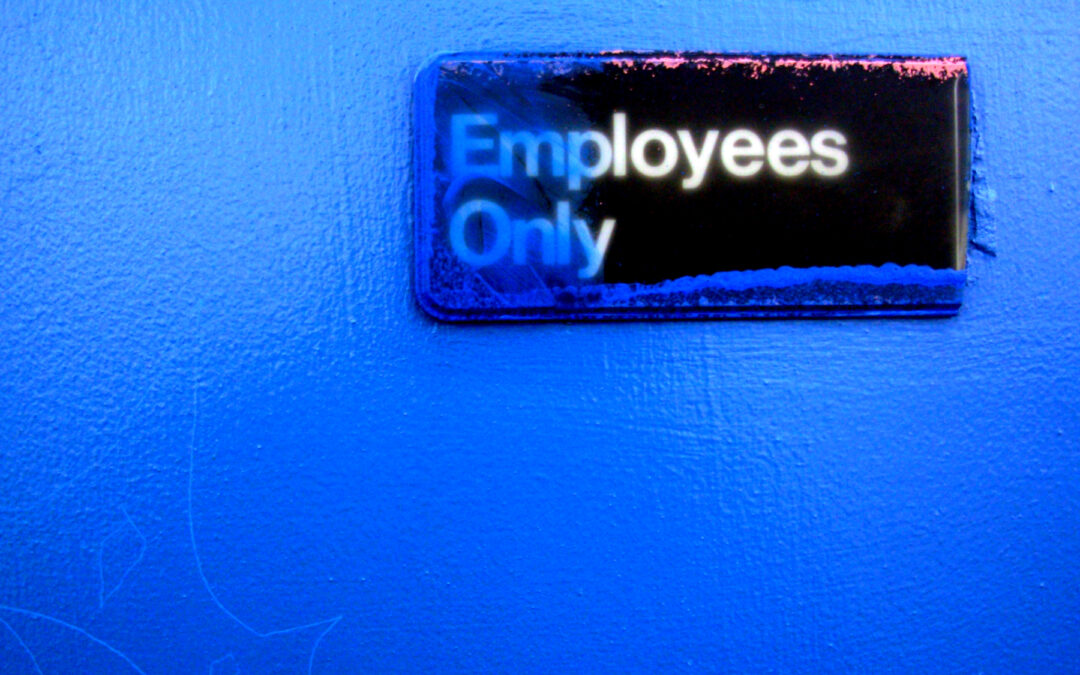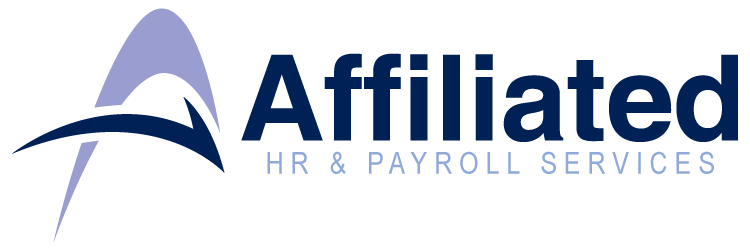
by Stephanie Baxmann | May 29, 2024 | Recruiting and Developing Talent
Gone are the days of running a “Help Wanted” ad in the local newspaper and waiting for resumes to come in. In today’s competitive hiring market, modern recruitment strategies are essential to attract and hire the best talent. Social recruiting, data-driven hiring practices, and advanced applicant tracking systems all play a crucial role. Let’s explore how you can use these innovative strategies to revolutionize your recruitment process.
The Rise of Social Recruiting
Social recruiting involves using social media apps like Twitter, Facebook, and LinkedIn to find new hires. According to data from Insight Global, 56 percent of recruiters say they find their best hires through social recruiting. More than 70 percent of job hunters between 18 and 34 found their most recent job through one of these social sites. It’s clear that social recruiting is beneficial for both recruiters and job seekers.
Engaging consistently with potential candidates is important for success in social recruiting. Some companies even involve their own employees in these efforts. This approach casts a wider net and allows potential applicants to network with peers who already work for you. Social media posts should either openly or implicitly convey your company’s culture and core values.
Leveraging Data-Driven Hiring Practices
Recruiters today have access to a global talent pool, which means they often receive more applications than they can reasonably screen. Data analytics software offers a solution.
These tools help your HR team streamline hiring and make more informed decisions. Sophisticated tools can analyze candidate behavior, compare it to market trends, and predict better hiring outcomes. For instance, you can identify which qualifications or experiences are most correlated with success in your roles, allowing you to prioritize candidates with these attributes. Data analytics software simplifies the entire hiring cycle for your team.
Innovative Recruitment Technologies
When faced with hundreds or even thousands of applicants, automated screening tools and AI-driven applicant tracking systems (ATS) can help. These tools can screen applicants for specific skills and competencies while filtering out unqualified candidates. They allow you to search through large volumes of applications quickly and automate repetitive tasks, saving your organization time and money.
Digital hiring platforms are another recent innovation. These platforms enable you to request and review video-recorded answers to questions from applicants at your convenience, simplifying the traditional hiring process. This can be particularly useful for initial screening interviews, allowing you to assess candidates’ communication skills and enthusiasm before scheduling in-person or live video interviews.
Integrating Applicant Tracking Systems
A sophisticated applicant tracking system (ATS) can help manage candidate flow through the hiring process. These systems keep everything organized, so you always know exactly where candidates are in the process and who you will be interviewing next. They also allow total customization of the questions you want to ask job applicants.
Utilizing an ATS also improves the candidate experience. An ATS keeps candidates in the loop and informs them of the next steps in the process so they always know whether they are still under consideration. This system makes your entire hiring process more seamless and transparent, which can enhance your employer brand.
Transforming the Recruitment Process
Due to the global talent pool available today, companies need to take advantage of cutting-edge recruitment technologies. These technologies can streamline your hiring process, improve the quality of new hires, and increase the efficiency of your HR team.
If you’re ready to transform your recruitment process, Affiliated HR & Payroll has the advanced talent solutions you’re looking for. Visit our recruitment solutions page to learn more and get started today!

by Afilliated HR & Payroll | Oct 18, 2022 | Benefits & Compensation, Performance Management, Recruiting and Developing Talent
When employees have a good experience at your company, top talent stays around longer, and it’s easy to see why. If employees aren’t satisfied with their experience at work, they are likely to leave. A study shows that most HR leaders know the importance of delivering a great employee experience.
However, when it comes to actually implementing and maintaining a great employee experience, there’s serious work to be done. One study reveals that only 13% of employees are totally satisfied with their workplace experience.
Here are five significant aspects of the employee experience to focus on:
1. Hiring
The employee experience starts with recruitment and hiring.
Focus on attracting and hiring the right person for the job — someone with the appropriate hard and soft skills who fits into your culture. Employees are more likely to stick around if their values align with your company philosophy.
2. Onboarding and training
How you go about acclimating new hires to your company can make or break the employee experience.
Focus on developing onboarding processes that make it easy for new hires to access the information they need to become productive employees. It’s not enough to give them new-hire paperwork to complete and offer standard training. You should also frequently check in with them to understand their needs, provide feedback and encourage open dialogue.
3. Pay and benefits
At the end of the day, employees work to get paid so that they can meet their financial obligations. They also want benefits that can enhance their well-being.
Focus on providing competitive, equitable salaries and benefits, as this will make it difficult for competitors to entice your people away. When it comes to benefits, strike a balance between what your employees need and what you can afford.
4. Technology
The world has become digital, and so has the way employers are administering their business processes.
Focus on automating key aspects of the employee experience, including:
- Job application.
- Onboarding.
- Benefits enrollment.
- HR, payroll and benefits self-service.
- Engagement and collaboration.
Remember that as much as employees want digitization, they still value human connections. Therefore, it’s important to know which processes should be fully or partially automated and which ones should not be automated at all.
5. Flexible work arrangements
Flexible work arrangements used to be a luxury for many employees. Now, they’re becoming a must-have.
Focus on avenues that promote flexible work schedules. While some jobs cannot be done remotely, flexible work arrangements come in many forms, including:
- Fully remote.
- Hybrid (combination of remote and on-site work).
- Part-time work.
- Temporary work.
- Compressed workweeks.
- Alternative schedules (e.g., second or third shifts).
As stated in an article published by FlexJobs, “Employers that allow their staff the freedom to work a flexible schedule can also find themselves a greener, more profitable, and more desirable company that people want to work for.”

by Afilliated HR & Payroll | Jul 7, 2022 | Health & Safety, HR Administration, Performance Management, Recruiting and Developing Talent
In a survey by McKinsey & Company, 75 percent of employers acknowledged that there’s a stigma around mental health in the workplace. People in the workplace, leaders included, are afraid to speak up about their mental health needs or ask for help. As the McKinsey report notes, employers can’t solve every problem contributing to poor mental health, but there is work they can do to reduce the stigma around mental health and promote healthy behaviors. We recommend these five actions:
- When possible, give employees a little extra time to slow down and rest. Employees may need a moment to breathe or a day to regain their peace of mind, and they shouldn’t be afraid to ask for time to take care of themselves. The ability to occasionally function at a medium (or even slow) pace should be built into performance expectations so that employees can avoid burnout or breakdown.
- Offer paid time off (PTO), mental health benefits, and flexible schedules if appropriate. In some cases, employees may want to get the mental health care but can’t afford it. Losing pay from a missed work shift might be too great a hardship, and effective treatments might be financially out of reach. These financial hindrances can exacerbate conditions like anxiety and depression. In other cases, employees can afford the time off and the treatments, but they can’t make regular appointments work with their schedules. If you can offer PTO, health insurance benefits, or flexible schedules, these can help employees get the care they need.
- Offer an Employee Assistance Program (EAP). An EAP gives employees access to expert, confidential assistance for substance abuse issues, relationship troubles, financial problems, and mental health conditions. These services are offered through an outside provider that connects employees with the appropriate resources and professionals. These programs enable you to provide professional assistance to employees in a confidential manner.
- Make reasonable accommodations when possible. If an employee informs you that they have anxiety, depression, or another mental health condition that’s affecting their work, begin the interactive process to determine what reasonable accommodation(s) you can provide in accordance with the Americans with Disabilities Act (ADA). The ADA applies when an employer has 15 or more employees, but many states have similar laws that require employers to make accommodations at an even lower employee count. You can learn more about the ADA on the HR Support Center.
- Promote good mental (and physical) health in the workplace. Healthy habits are important for everyone to practice. Consider setting time aside during the week or month for employees to participate in activities like yoga, meditation, and mindfulness that develop and strengthen these habits. If you aren’t familiar with these practices, solicit the help of your employees. One or more of them may know a lot about these activities and be able to assist you in setting up a workplace program or modifying a program for employees currently working from home.

by Afilliated HR & Payroll | Jun 29, 2022 | Career Planning, Recruiting and Developing Talent
When interviewing job candidates, time is critical.
The time you spend talking to candidates adds up quickly, especially if you have a lot of great candidates. That has a cost—you’re not getting other important work done. That time also goes by incredibly fast. Within the span of a brief discussion, you have to gather the information you need to make an informed hiring decision and to sell the role to a potential hire. And don’t forget you’re competing with other employers eager to snatch up talent. Every minute counts.
Wasting time also amounts to a bad experience for candidates. Aside from the fact that they have other things going in their lives, you will be asking at least one of them to make a good decision too. A bad decision, on your part or theirs, will likely result in you both parting ways sooner rather than later, compounding the cost of filling the role.
Let’s look at some basic practices that will enable you and your job candidates to make the best use of this time.
Before you conduct any interviews, document what the job entails and what core competencies will be needed to do it. Interviews are not the time to clarify what you want the job to be. If you go into interviews fuzzy about the functions of the job, you won’t be able to assess whether and how well candidates can perform.
Include questions about specific occasions when candidates used those competencies and what the outcome was. For example, if the job you’re hiring for will involve regularly de-escalating tense situations with irate customers, you might ask candidates to tell you about a time in which they were able to calm an irate customer. This method of questioning—called behavioral interviewing—cuts to the chase. You not only get an affirmative or negative answer as to whether the candidate possesses the competencies you need, but also obtain verifiable evidence (or not) that they’ve previously done what they say they can do. For behavioral questions to be most effective, pose the same questions to each candidate and evaluate their responses using the same criteria.
Put your interview team together (if really needed) and coordinate who’s asking what. If the person you hire will be working with multiple people, each with a unique stake in the work being done, it may be prudent to involve some of these employees in the interview process. If several employees will be participating in the interviews, meet with them ahead of time to formulate a plan so there’s no unnecessary overlap in the questions you’ll each be asking.
Connect each response to what’s needed for this new job. After a candidate has answered each question, take a brief moment to explain how this new job may be both similar to and different from what the candidate did previously. For example, if a previous role of theirs required them to complete five projects per week, and the new role would require them to complete a greater or fewer number of similar projects, mention that.
The purpose of doing this is to give the candidate a clear picture of the tasks and challenges they can expect in the role so they know what to anticipate if they eventually accept a job offer. There’s also a reason why now is an opportune time to make this connection. When a candidate is reflecting on a previous instance that required the competencies you need, they’re likely remembering how they felt at the time. Maybe they were energized. Maybe they hated the experience and vowed then and there to quit as soon as they could. Whatever the case, eliciting these feelings serves your interests and theirs—yes, even if it prompts their immediate departure from the candidate pool. The last thing you want is to hire someone who either can’t do the job or finds themselves unhappy doing it. You’re not just filling a role. You’re seeking the person who can be the most successful in it.
Don’t ask cute or clever questions. They’re a waste of everyone’s time. You’re almost certainly not going to learn anything useful by asking candidates what dessert they would be, how they’d plan a trip to the moon, or whether they prefer cats or dogs. Asking candidates to solve a made-up problem on the spot might yield interesting information, but unless the job involves a lot of unprompted problem-solving with no time to prepare, you’re better off asking candidates something else.
Keep questions job related. Okay, we said earlier that the last thing you want to do is to hire the wrong person, but that’s not necessarily the worst thing that can happen. A bigger mistake than a bad hire is a hiring decision that nets you a costly discrimination claim. For example, if the job has a legitimate age requirement (such as operating machinery or serving alcohol), asking “How old are you?” will likely give rise to an age discrimination claim. Instead, just ask if they’re at least 18 years old (or whatever the required minimum age is).

by Afilliated HR & Payroll | Mar 7, 2022 | Benefits & Compensation, HR Administration, Recruiting and Developing Talent
You’ve probably been hearing about the Great Resignation (or however you want to describe it) for months now. Even if you’re not dealing directly with increased turnover, your employees know they have options. Their friends, family, and people they know peripherally or on social media have made the leap and are gleefully announcing it on LinkedIn.
Some job-hoppers may be emboldened by the movement to quit good jobs in the hope of something better—better pay, more flexibility, or more opportunities for advancement. Some have simply been pushed to the brink by dead-end jobs, lousy company culture, or ineffective managers. Others have given up trying to “have it all” and left the workforce completely.
But what if employers could capitalize on this current “I quit” mood? What if you could keep your employees engaged, inspire loyalty, and make it easier to attract and hire those that are looking for that next best thing?
We’ve got some ideas for both prioritizing current employees and making it easier to attract new ones.
- Understand and be responsive to employee needs, motivations, and priorities. A paycheck may be the reason everyone has a job in the first place, but it’s not the only reason people choose to work or decide to work for one employer over another. Your employees stick with you because there’s something in it for them besides the money. The job is useful to them. Knowing why it’s useful enables you to keep employees satisfied and, better yet, make their jobs even more appealing.
- Prioritize employee development. A work environment in which people gain knowledge, learn new skills, and advance in their careers speaks more clearly and loudly than any marketing message can. People like working where they can grow and develop. According to a LinkedIn report, companies “that excel at internal mobility are able to retain employees nearly twice as long as companies that struggle with it.” And a better trained workforce is also a more productive and profitable workforce!
- Invite employees to be co-creators of the organization. Empower them to make decisions about how things are done and where the organization is going. People feel more a part of something when they see themselves in it. They’re more engaged when their decisions bring about real change.
- Reward success. In fact, reward anything you want to see more of. Whether large or small, the rewards have to be meaningful. Ideally, figure out what type of reward speaks to each employee. For some, acknowledgment in a company meeting will make their heart sing. For others, receiving a token of your appreciation, such as a coffee gift card, will be more meaningful.
- Allow for a healthy work-life balance. Flexibility is a big selling point for employees looking for better balance between work and life. Your employees have other commitments they need to attend to. Some are caring for young children or other family members while navigating daycare and school closures or multiple appointments. Give employees the time to see to those commitments and have a life outside of work, and you’ll get more from them when they’re on the job. Options may include remote or hybrid work, paid time off, flex hours, four-day workweeks, alternative schedules, and reducing workload. Remember, however, that policies are only as good as the practices around them. Ensure that employees don’t need to jump through hoops to request time off. Remind managers to be responsive to requests for time off and on the look out for signs that employees are feeling overwhelmed.
- Conduct “stay interviews.” Don’t wait until people are leaving to investigate what could have inclined them to stay. Talk to employees now about what’s going well, what pain points they’re experiencing, and what could be done to take the relationship to the next level. Stay interviews enable you to address problems and unfulfilled wishes before they drive people out the door.
Let people go who want to go. You have only so much time in the day. Don’t spend it trying to entice people to stay if they really want to leave the organization. That time is better spent ensuring smooth transitions and engaging employees who don’t have one foot out the door.

by Afilliated HR & Payroll | Dec 1, 2021 | HR Administration, Recruiting and Developing Talent, Recruiting and Developing Talent
What questions should an employer avoid asking during the recruiting and interview process?
You should avoid questions that are not job-related or that cause an applicant to tell you about their inclusion in a protected class. These would include questions about race, national origin, citizenship status, religious affiliation, disabilities, pregnancy, sexual orientation or gender identity, past illnesses (including use of sick leave or workers’ comp claims), age, genetic information, or military service. You should also avoid asking about things that might be protected by state law (e.g., marital status and political affiliation).
Asking these sorts of questions could result in rejected candidates claiming that the decision not to hire was based on their inclusion in these protected classes rather than job-related considerations. We recommend looking at your state’s protected class list to be sure you don’t run afoul of it.
During an interview, it is advisable to present the candidate with a copy of the job description that lists all essential job functions, including any physical requirements necessary to perform the job, and simply asking the candidate if they are able to perform the job duties listed. For example, if the position requires someone to lift 25 pounds repeatedly throughout the day, you should ask the applicant whether they can lift 25 pounds repeatedly throughout the day. You should not ask whether they have back pain or any other physical issues that might prevent them from lifting 25 pounds or if they’d filed a workers’ comp claim when doing manual labor in the past. If you need someone to work Sunday mornings, you should ask the applicant if they can work Sunday mornings. You should not ask if they attend church or have other commitments that would prevent them from working Sunday mornings.
If a candidate proactively acknowledges a disability or medical condition, we recommend that you refrain from addressing this candidate’s mention of it directly. Instead, confirm that the candidate can perform the essential functions of the position with or without reasonable accommodation. You’ll want to be certain that you are asking this question consistently of all candidates, and not just those who have disclosed a past medical condition or those you suspect may not be able to perform the essential functions of the position. It’s also important not to make assumptions about a candidate’s ability to perform their job based on their having disclosed that they have a disability or other health condition.
Finally, unless a candidate has an obvious disability or has voluntarily disclosed that they have a disability, we would not recommend asking applicants if they would need accommodation to perform job functions as it would have the effect of creating a pre-employment disability inquiry, which is prohibited under the Americans with Disabilities Act (ADA).
Content courtesy of the HR Support Center – https://affiliatedpayroll.myhrsupportcenter.com






